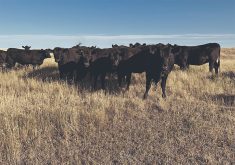CALGARY – A five-year program will provide $125 million in drought and flood protection for Alberta municipalities and Indigenous communities as the province faces what could be its worst drought since 2001.
“Today, due to a strong El Nino not seen in over seven years, we’re seeing warmer temperatures coupled with even less precipitation,” said provincial environment minister Rebecca Schulz.
Related stories:
- Scientist sounds water crisis alarm
- Rivers face increased demand and dwindling water supply
- Alta. OKs flood prevention reservoir
- More funding committed to Alberta irrigation
Read Also

Alberta eases water access for riparian restoration
Alberta government removes requirement for temporary diversion licence to water plants up to 100 cubic metres per day for smaller riparian restoration projects
“This has led to empty riverbeds and dangerously low reservoirs across our province. This is a serious situation and our government recognized we had to take immediate action in Budget 2024.”
Schulz was joined by Alberta finance minister Nate Horner at a news conference March 4 in Calgary outlining the new Drought and Flood Protection Program. Funding for the initiative was announced in the recent provincial budget.
The program will provide $25 million a year for the 2024-25 to 2028-29 fiscal years.
“We’re doing this through local grants because we know that needs differ from region to region and town to town,” said Schulz.
It will help communities such as Pincher Creek southwest of Fort Macleod build new water infrastructure as they struggle with drought.
“It’s about relocating water intakes so that families have access to water,” said Schultz.
“It’s about improving water access and storage so that businesses can keep the economy going. It’s about creating new flood barriers so that bridges don’t wash out and so basements remain dry. It’s about helping businesses stay open and families stay in their homes regardless of the weather.”
Horner estimated drought in 2023 cost Alberta billions of dollars due to factors such as wildfires and indemnities paid to producers through the Agriculture Financial Services Corp.
“And that doesn’t count what it costs individuals around the province, so it’s dramatic.”
Disaster recovery programs have also paid more than $1.7 billion in Alberta since 2010 to cover uninsured losses linked to flooding, said a provincial statement. As well, there has been more than $5 billion in insured losses, it added.
Federal officials are predicting that more than 72 percent of Canada will be under drought conditions this year, said Schulz.
“So, we haven’t seen a drought like this since 2001, but again, I would remind Albertans that we have seen this before in 2001,” she said.
“And when we saw that situation, Albertans really did come together to say, ‘look, how can we conserve water? How can we use less and ensure that all of our neighbours have access to some water?’
“We’re taking that approach again. Again, we started early, even before the holidays, raising the flag on the fact that this is potentially going to be a very significant drought season.”
The Drought and Flood Protection Program is based on the Alberta Community Resilience Program, which ended in 2020. Details such as eligibility requirements, application deadlines and cost sharing will be released when the program opens later this year.
Examples of potential projects could include:
· Drought and flood proofing, including relocation of critical infrastructure as well as infrastructure to access such services.
· Structural measures to ensure public safety and protect critical infrastructure. These could range from retention ponds and diversion structures to stabilization works, flood walls, berms and bank protection.
· Purchasing property for relocation or for construction and/or access to a project.
· Bio-retention infrastructure to boost flood attenuation and limit drought impact.
Schulz said the provincial government is also undertaking large infrastructure projects that are separate from the program. They include the $912.5 million Springbank Off-stream Reservoir near Calgary, which will help prevent a repeat of the massive flooding that hit the city in 2013.
She also pointed to the proposed Eyremore dam on the Bow River near Brooks, Alta. These types of projects are “absolutely going to be necessary” to give the province the capacity to withstand flooding and drought, she added.
They will also help ensure Alberta keeps its full allocation of water before it flows into other jurisdictions, said Schulz. At least 50 percent of the natural flow of east-flowing streams must be passed by Alberta to Saskatchewan.
Schulz said premier Danielle Smith asked her to review the province’s water allocation system and how it can be maximized.
“Storage is going to be a large part of that moving forward.”
Horner said $251 million in total capital funding will be provided over three years for flood and drought mitigation projects.
“Another $539 million over three years will fund municipal and regional waste-water projects, and $418 million in capital funding over three years will build up Alberta’s infrastructure to manage water, particularly irrigation projects that farmers and agriculture producers rely on.”
As former agriculture and irrigation minister, Horner said the provincial government is committed to irrigation. Nearly $1 billion has been made available since 2019 through a partnership between the province, the federal Canada Infrastructure Bank and irrigation districts, he said.
Provincial officials announced in 2021 that irrigation will be expanded by up to 230,000 acres. Horner said it isn’t about increasing water licenses but is instead about rehabilitating aging infrastructure and doing more with less.
“That was about converting canals to pipe, having less evaporation, more technology on the systems and being able to add acres. It’s been very successful, and the funding that we’re talking about today is a continuation of that big spend.”
Contact doug.ferguson@producer.com


















